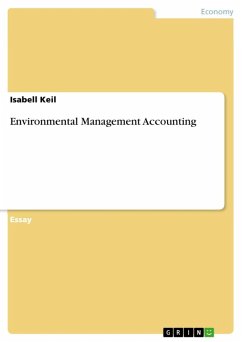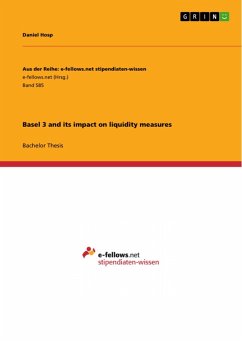Essay from the year 2003 in the subject Business economics - Investment and Finance, grade: 1,3 (A), University of Glamorgan, language: English, abstract: The importance placed on environmental issues has increased during the last two decades. Businesses have become increasingly aware of the environmental implications on their operations, products, and services. Environmental risks may have serious consequences for the prospects of a company, with particular financial consequences. Businesses experience increased pressure from various stakeholders to report on environmental behaviour. Smith and Lambell (1997) stated that the topic of environmental accounting is not new, because many companies already produce environmental statements within their annual reports. Traditional accounting techniques such as financial and management accounting are used to report on the environmental implications of a business. Smith and Lambell (1997) also argued that companies should cease considering the environment as a given factor and take it into their accounts. This can be done by identifying the environmental costs of a product, service, or process. The environmental costs increased as a consequence of this, amongst other reasons. The existing conventional accounting systems are not able to deal with these environmental costs because they tend to attribute them to general overhead accounts. As result managers are often unaware of them and have no incentive to reduce them (UNDSD, 2003). Environmental Management Accounting, a variant of environmental accounting, provides managers with knowledge about these environmental costs by extending conventional methods of accounting to capture them (Smith and Lambell, 1997). Environmental Management Accounting (EMA) generates, analyses and uses financial and non-financial information to support internal management. It is a complementary management accounting approach to the financial accounting approach, according to Bennett and James (1998a). EMA helps to identify and allocate environment-related costs and aims to develop appropriate mechanisms for this (Frost and Wilmhurst, 2000). Key application fields for EMA are: assessment of annual environmental costs/expenditures, product pricing, budgeting, investment appraisal, calculating costs and savings of environmental projects, or setting quantified performance targets, to name only a few (Jasch, 2003). Frost and Wilmhurst (2000) stated that EMA practices have resulted in cost savings and competitive advantage.
Dieser Download kann aus rechtlichen Gründen nur mit Rechnungsadresse in A, B, BG, CY, CZ, D, DK, EW, E, FIN, F, GR, HR, H, IRL, I, LT, L, LR, M, NL, PL, P, R, S, SLO, SK ausgeliefert werden.









